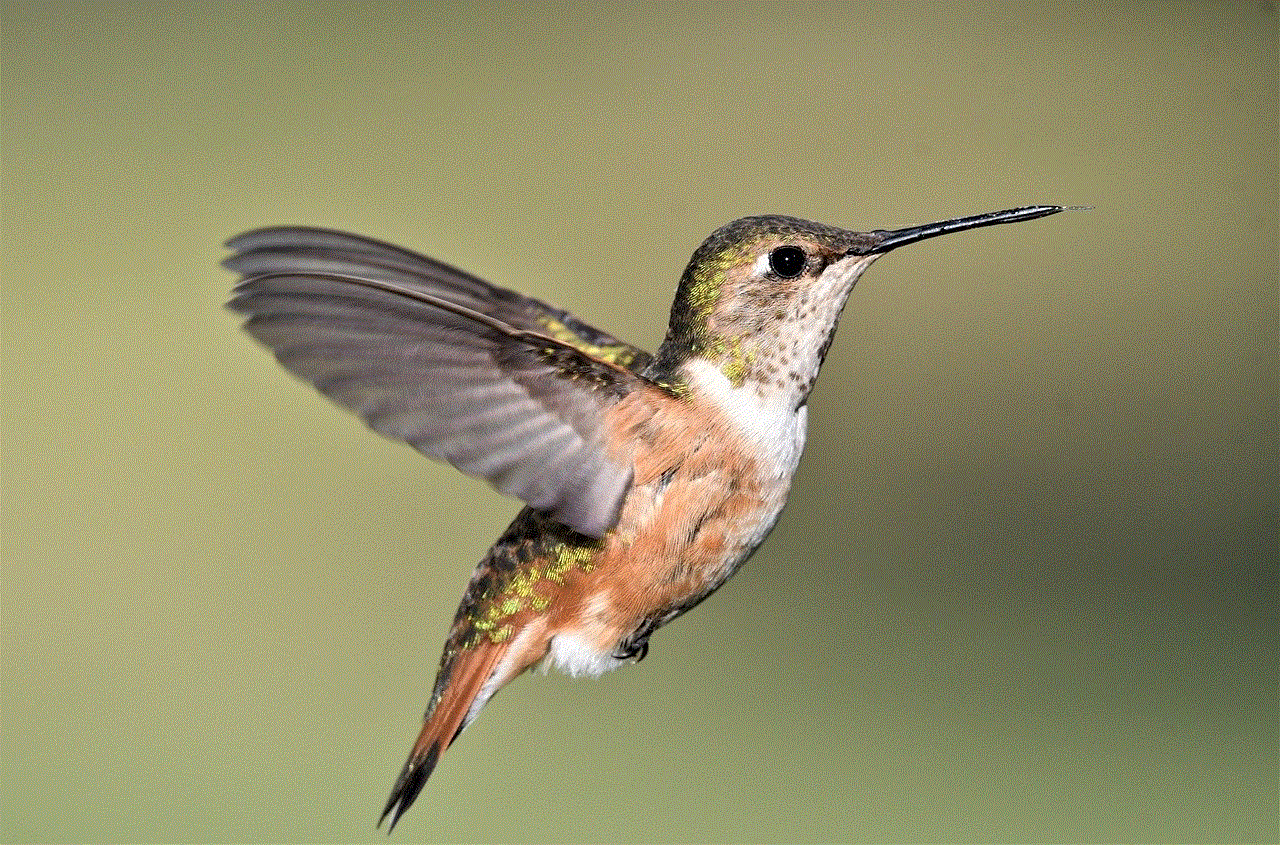how to block facebook page
Title: How to Effectively Block a Facebook Page: A Comprehensive Guide
Introduction:
In today’s digital age, social media platforms like Facebook have become an integral part of our lives. However, there may be instances when you need to block a Facebook page, whether it’s to prevent distractions, maintain privacy, or protect yourself from harmful content. In this article, we will guide you through various methods to block a Facebook page effectively. Whether you’re using a computer or a mobile device, these steps will help you regain control over your Facebook experience.
Paragraph 1: Understanding the Need to Block a Facebook Page
Before diving into the technical aspects of blocking a Facebook page, it’s important to understand the reasons behind wanting to block one. It could be due to excessive advertisements, offensive content, or simply to focus on more productive activities. Identifying your reasons will help you determine the most suitable method to block a Facebook page.
Paragraph 2: Blocking a Facebook Page on Desktop
If you primarily access Facebook through a computer, there are several ways to block a Facebook page. One method is to navigate to the page in question, click on the three-dot menu, and select the “Block” option. Another way is to access the “Settings” menu, click on “Blocking” in the left sidebar, and then add the page’s URL to the “Block Pages” section.
Paragraph 3: Blocking a Facebook Page on Mobile Devices
For those who prefer accessing Facebook through their mobile devices, the process to block a Facebook page is slightly different. On the Facebook app, visit the page you wish to block, tap on the three-dot menu, and select “Block.” Alternatively, you can also go to the “Settings & Privacy” menu, select “Settings,” scroll down to the “Blocking” section, and add the page’s URL to the “Block Pages” field.
Paragraph 4: Utilizing Browser Extensions to Block Facebook Pages
If you find the above methods cumbersome, you can make use of browser extensions to block Facebook pages. Extensions like “Firefox “>Block Site ” for Chrome or “StayFocusd” for Firefox allow you to add specific URLs to a block list, effectively preventing access to those pages.
Paragraph 5: parental control software for Blocking Facebook Pages
Parents concerned about their children’s Facebook usage can utilize parental control software to restrict access to specific Facebook pages. Software like Qustodio or Norton Family enables parents to block certain websites, including Facebook pages, based on individual profiles.
Paragraph 6: Blocking Facebook Pages through Firewall or Router Settings
For advanced users with access to router or firewall settings, blocking Facebook pages can be accomplished through these devices. By adding specific URLs or domain names to the block list, you can restrict access to Facebook pages for all devices connected to your network.
Paragraph 7: Using Third-Party Applications for Blocking Facebook Pages
There are various third-party applications available that can assist in blocking Facebook pages. Applications such as Cold Turkey, Freedom, or SelfControl allow users to create custom block lists, including specific Facebook pages, and set timers to limit access during certain hours.
Paragraph 8: Reporting Offensive Facebook Pages
In cases where blocking a Facebook page is not enough, or if the content violates Facebook’s community guidelines, users can report the page to Facebook. By clicking on the three-dot menu on the page and selecting “Find Support or Report Page,” you can provide details and submit a report, prompting Facebook to take appropriate action.
Paragraph 9: Unblocking a Facebook Page
If you’ve blocked a Facebook page but later decide to unblock it, the process is straightforward. Simply navigate to your “Settings” or “Settings & Privacy” menu, select “Blocking,” and find the page in the “Block Pages” or “Blocked Pages” section. Click on the “Unblock” button next to the page to remove the block.
Paragraph 10: Conclusion
Blocking a Facebook page can be an effective way to regain control over your social media experience. Whether you choose to block Facebook pages through the platform’s settings, browser extensions, parental control software, or advanced methods like firewall settings, you have the power to shape your online environment. By following the steps outlined in this guide, you can successfully block Facebook pages and create a more focused and enjoyable Facebook experience.
ending my child lebensborn
Title: Ending the Child Lebensborn Program: A Dark Chapter in Nazi Germany’s History
Introduction:
The Child Lebensborn program was a sinister and little-known aspect of Nazi Germany’s ideology, aimed at creating a “master race” through selective breeding. This article explores the origins, implementation, and ultimate demise of this program, shedding light on the suffering inflicted upon innocent children and their mothers during this dark chapter in history.
1. Origins of the Child Lebensborn Program:
The Child Lebensborn program was conceived in 1935 by Heinrich Himmler, the head of the SS and one of the key architects of the Nazi regime. Himmler saw the program as a way to enhance the Aryan race by encouraging SS officers to procreate with racially “pure” women. The program aimed to provide financial and social support to unmarried women, who would bear the children of SS members.
2. Selective Breeding and Aryan Ideology:
The Child Lebensborn program was intrinsically linked to Nazi Germany’s Aryan ideology, which emphasized racial purity and superiority. SS officers were chosen for their perceived Aryan qualities, such as blonde hair and blue eyes, and were encouraged to father as many children as possible. The children were seen as the future of the Nazi regime, and their upbringing was carefully controlled to ensure their indoctrination into the Nazi ideology.
3. The Role of Lebensborn Homes:
Lebensborn homes were established across Germany and occupied territories to provide a supportive environment for pregnant women and their children. These homes offered medical care, financial assistance, and educational opportunities, but they also served as breeding grounds for Nazi propaganda and indoctrination. The children born in these homes were subjected to intense Nazi ideology from an early age, creating a generation of future Nazi supporters.
4. Expanding the Program:
As the war progressed, the Child Lebensborn program expanded to include children from occupied territories. This expansion aimed to further the Nazi objective of creating a racially superior generation, even if it meant forcibly separating children from their families. Many children were forcibly taken from their parents and placed in Lebensborn homes, where they were raised as “pure” Aryans, stripped of their original identities.



5. The Plight of Mothers and Children:
The Child Lebensborn program inflicted immense suffering upon both mothers and children. Unmarried women who participated in the program faced social stigma and ostracization from their communities. Additionally, many children faced discrimination and bullying due to their Lebensborn origins. The emotional toll on these individuals cannot be underestimated, as they struggled to come to terms with their identity and the atrocities committed in the name of the Nazi regime.
6. The Fall of the Program:
As the tide of World War II turned against Nazi Germany, the Child Lebensborn program began to collapse. The liberation of occupied territories exposed the atrocities committed within the Lebensborn homes, leading to public outrage and condemnation. The end of the war saw the dissolution of the program, leaving behind a shattered legacy of suffering and broken lives.
7. Seeking Justice and Healing:
In the aftermath of World War II, many victims of the Child Lebensborn program sought justice and recognition for their experiences. Survivors and their families fought for acknowledgement of their suffering, both in legal battles and through the creation of support networks. The process of healing and reclaiming their identities was long and arduous, but many found solace in reconnecting with lost family members and sharing their stories.
8. Lessons Learned:
The Child Lebensborn program stands as a stark reminder of the depths of human depravity and the consequences of racist ideology. It serves as a cautionary tale, emphasizing the importance of vigilance against the rise of extremist ideologies and the protection of vulnerable individuals. Education and remembrance are crucial in ensuring that the atrocities committed under the guise of the Child Lebensborn program are never repeated.
9. Memorializing the Victims:
Various memorials and museums have been established to honor the memory of those affected by the Child Lebensborn program. These spaces serve as a reminder of the victims’ resilience and highlight the need for continued efforts in combating discrimination and prejudice. By remembering the past, we can strive towards a more inclusive and empathetic future.
10. Conclusion:
The Child Lebensborn program represents one of the darkest chapters in Nazi Germany’s history. Born out of a twisted ideology, it caused immense suffering to mothers and children alike. While the program was ultimately dismantled, its legacy continues to haunt the lives of its survivors. By shedding light on this forgotten aspect of Nazi Germany’s atrocities, we can ensure that the victims are not forgotten, and work towards a future free from such horrors.
what is the fear of insects
Title: Entomophobia: Understanding the Fear of Insects
Introduction:
Insects, a diverse and abundant group of creatures, play crucial roles in ecosystems around the world. However, for some individuals, the mere thought or sight of an insect can trigger intense fear and anxiety. This irrational fear is known as entomophobia. In this article, we will explore the origins, symptoms, causes, and potential treatments for entomophobia, offering a comprehensive understanding of this prevalent phobia.



Paragraph 1: What is Entomophobia?
Entomophobia is an excessive and persistent fear of insects. It is classified as a specific phobia, which is characterized by an intense and irrational fear of a specific object, situation, or creature. People with entomophobia experience extreme anxiety and distress when exposed to insects or even when thinking about them. This fear often leads to avoidance behaviors and may significantly impact daily life.
Paragraph 2: Prevalence of Entomophobia
Entomophobia is a common phobia that affects people of all ages and backgrounds. While the exact prevalence is difficult to determine, studies suggest that fear of insects is more prevalent in children than in adults. This may be due to a combination of factors, including innate fears, learned behavior, and cultural influences. Additionally, entomophobia tends to be more prevalent in individuals living in areas with high insect populations or in regions where certain insects are associated with disease or danger.
Paragraph 3: Symptoms of Entomophobia
Symptoms of entomophobia can vary in intensity and may manifest both physically and psychologically. Physiological symptoms include rapid heartbeat, sweating, trembling, shortness of breath, nausea, and feeling lightheaded. Psychologically, individuals may experience intense anxiety, panic attacks, a sense of impending doom, and a desire to escape the situation. The fear may be so severe that it interferes with daily functioning, causing distress and impairment in personal and professional life.
Paragraph 4: Causes of Entomophobia
The fear of insects can arise from a variety of factors, including personal experiences, evolutionary predispositions, and cultural influences. Traumatic experiences, such as being bitten or stung by an insect in childhood, can create lasting fears. Additionally, evolutionary factors suggest that humans may have an inherent fear of insects due to their potential to carry diseases or cause harm. Cultural factors, such as media portrayal of insects as dangerous or pests, can further reinforce the fear.
Paragraph 5: Development of Entomophobia in Children
Entomophobia often develops during childhood and may persist into adulthood if left untreated. Children are more susceptible to developing entomophobia due to their heightened imagination, limited understanding of the world, and lack of exposure to diverse experiences. Negative experiences, such as witnessing a sibling being stung by a bee or hearing exaggerated stories about insects, can contribute to the development of the phobia. Parents and caregivers should be mindful of their reactions to insects and provide appropriate education to ensure a healthy understanding.
Paragraph 6: Treatment Options for Entomophobia
Overcoming entomophobia is possible with various treatment approaches. Cognitive-behavioral therapy (CBT) is a widely used and effective treatment for specific phobias, including entomophobia. This therapy aims to help individuals identify and challenge irrational thoughts and beliefs related to insects, gradually exposing them to their fears in a controlled and safe environment. Additionally, relaxation techniques, such as deep breathing exercises and mindfulness, may help manage anxiety symptoms.
Paragraph 7: Exposure Therapy for Entomophobia
Exposure therapy, a key component of CBT, involves gradually exposing individuals to the feared object or situation. In the case of entomophobia, this may involve starting with visual exposure to images of insects, progressing to videos, and eventually introducing live insects in a controlled setting. The exposure is done under the guidance of a trained therapist, who provides support and helps the individual develop coping mechanisms.
Paragraph 8: Medication for Entomophobia
In some cases, medication may be prescribed to alleviate the symptoms of entomophobia. Anti-anxiety medications, such as selective serotonin reuptake inhibitors (SSRIs) or benzodiazepines, may be prescribed on a short-term basis to help manage anxiety and panic attacks. However, medication alone is not considered a long-term solution and is often used in conjunction with therapy.
Paragraph 9: Self-Help Strategies for Entomophobia
While professional help is recommended, individuals with entomophobia can also practice self-help strategies to manage their fear. These strategies include educating oneself about insects, gradually exposing oneself to harmless insects in controlled environments, using visualization techniques to imagine positive encounters with insects, and seeking support from friends and family.
Paragraph 10: Conclusion



Entomophobia, the fear of insects, can be a distressing and debilitating phobia that affects many individuals. Understanding the causes, symptoms, and available treatment options is crucial for overcoming this fear. By seeking professional help, engaging in therapy, and adopting self-help strategies, individuals with entomophobia can gradually conquer their fear and live a more fulfilling and anxiety-free life.
